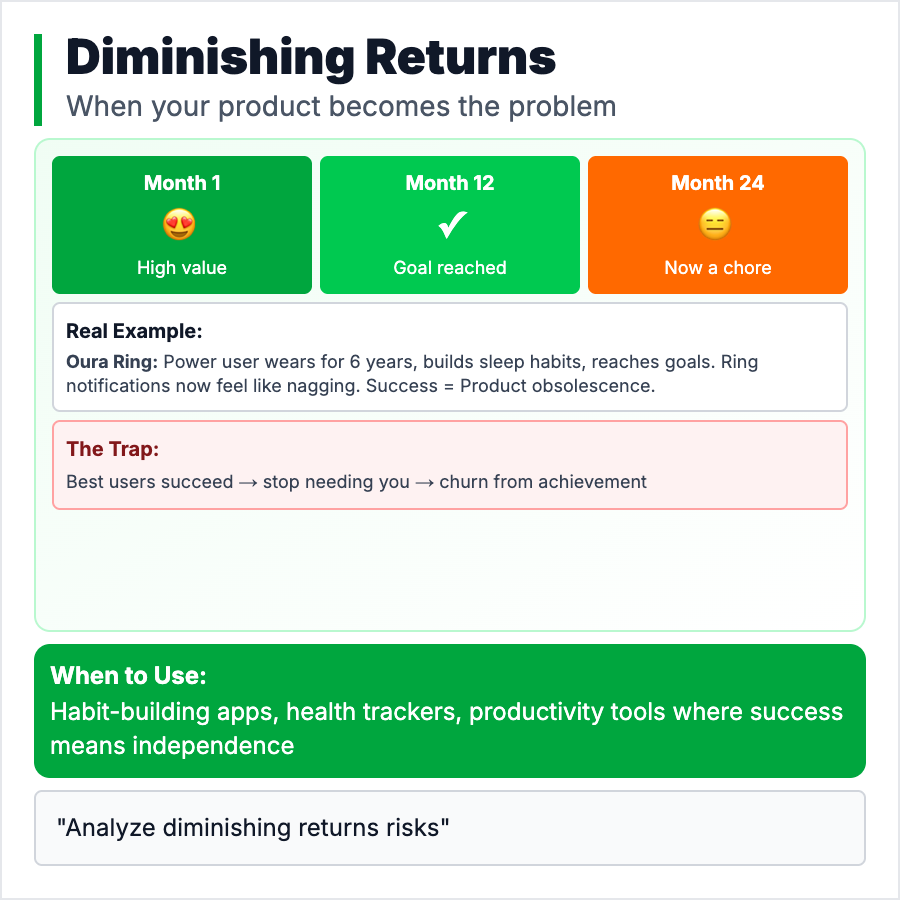
What is Diminishing Returns?
Diminishing Returns means each additional unit of effort produces less output. First optimization improves conversion 20%, second improves 5%, third 1%. At some point, you're spending weeks for tiny gains. Better to move on to new opportunities. Related to Pareto Principle (80/20 rule)—first 20% of effort gets you 80% of results. Know when to stop and work on something with more leverage.
When Should You Use This?
Recognize diminishing returns when you're polishing features forever, when A/B tests yield smaller wins each time, or when the team debates pixel-perfect details. Ask: "Could this effort be better spent elsewhere?" Use the 80/20 rule—get to 80% quality fast, ship it, move to next thing. Come back later if it actually matters. Perfectionism kills startups.
Common Mistakes to Avoid
- •Polishing forever—"just one more tweak" costs you weeks of new feature development
- •Optimizing the wrong thing—improving feature 5% of users touch
- •Not measuring marginal gains—track effort vs impact for each optimization
- •Sunk cost fallacy—"we've spent so much already" isn't a reason to continue
- •Ignoring opportunity cost—time spent here can't be spent on higher-leverage work
Real-World Examples
- •Onboarding optimization—First pass: 20% improvement. Tenth pass: 0.5% improvement. Stop.
- •Logo redesign—Founders spend weeks on logos that users don't care about
- •Feature completeness—90% complete is often good enough, last 10% takes as long as first 90%
- •Email subject lines—Test 3 variants, pick winner, move on. Don't test 50 variants.
Category
Product Management